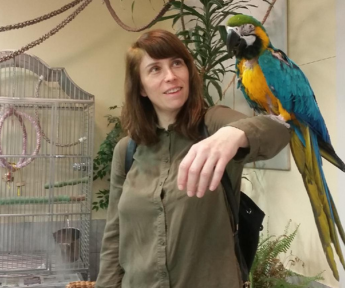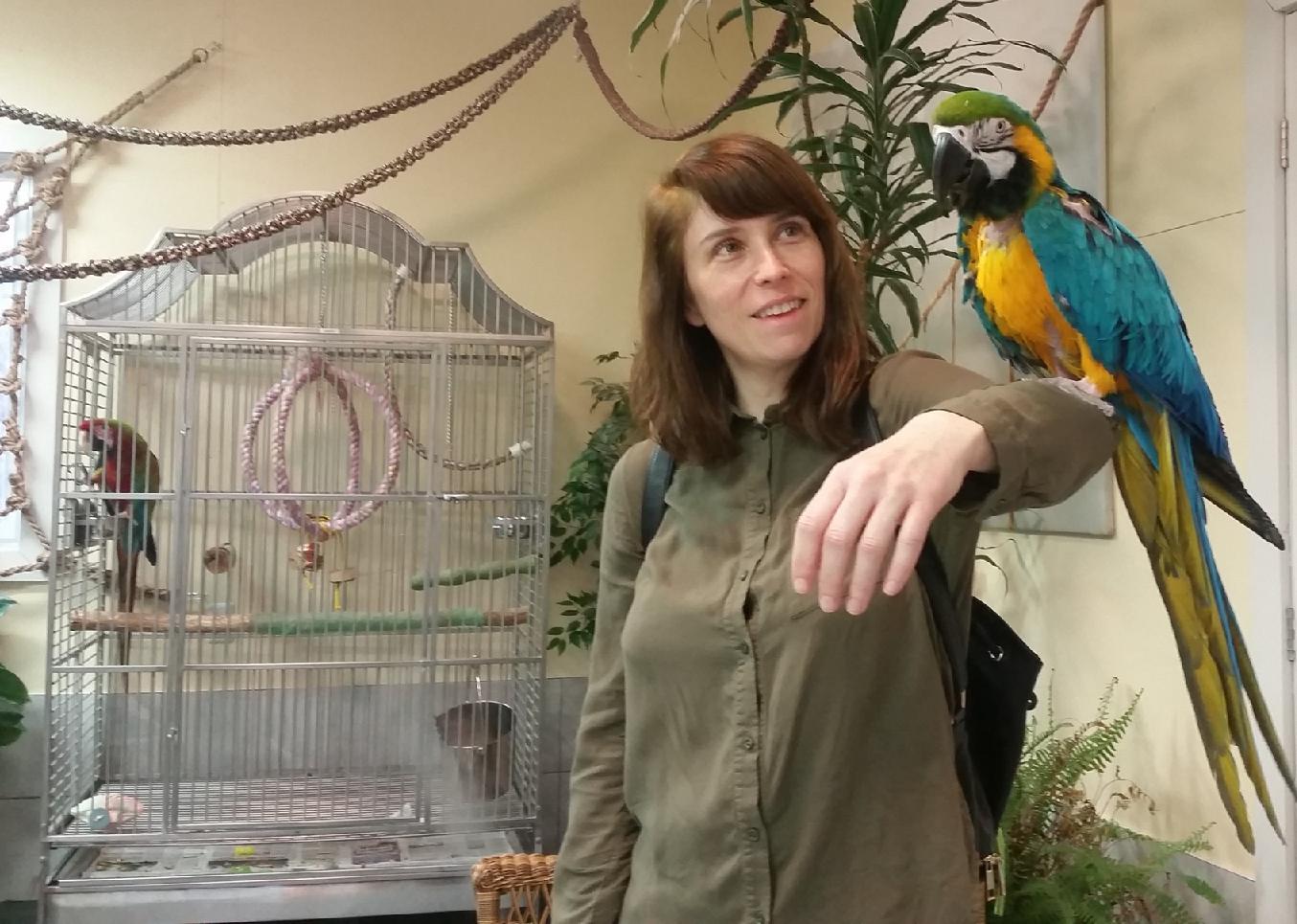In February 2022, Julie Morand-Ferron left us prematurely at the age of 44. Julie was not only an accomplished artist and a vibrant communicator, she was also a rising star in the field of animal behaviour, and recognized internationally as an expert in animal cognition and cognitive ecology. The goal of her career was to understand how cognition works and evolves in natural environments. From birds to crickets, and from lab to fieldwork, she studied why cognition varies among species and individuals, in both the proximate and ultimate sense. She was also a wonderful colleague, friend, and inspiration for all people around her. Although still at a relatively early stage of her career, Julie had an exceptional impact on the scientific community and was loved by many. Here we summarize her scientific journey.
Photo by Chloé Montreuil-Spencer.
Education and first steps in science
Julie was a native French speaker and spent most of her life in Quebec, Canada. In 1998, she started her career as an undergrad at Laval University, under the supervision of Prof. Jeremy McNeil. She was the kind of student who left their mark, impressive not only for her academic brilliance but also for who she was as an individual. When Julie joined Prof. McNeil's lab, he was interested in which factors associated with the male spermatophore affect the duration of the post-mating refractory period in polyandrous lepidopterans. Was it just the size of the spermatophore affecting stretch receptors, the presence of sperm, and/or the accessory gland secretions? To answer these questions, Julie took on the challenge of designing an elegant but difficult experiment that most people would have abandoned after the first failed attempt. But Julie's tenacity won out; she found how to remove the germinal testicles from late instar larvae and she was able to show that the presence of sperm was not the only factor affecting females’ production of pheromones. She impressed everyone with her intellect, curiosity, and dedication as a scientist, as well as her empathy as a caring individual who was cheerful and always willing to lend a hand.
After initially working on invertebrates, Julie chose another route. She moved to McGill University in 2001 to start a Masters degree, soon upgraded to a PhD, with Prof. Louis Lefebvre on foraging innovations and kleptoparasitism in birds. Using field as well as aviary experiments, she investigated the functional ecology and consequences of innovative food “dunking” in water by Carib grackles (Quiscalus lugubris) in Barbados. Julie discovered that food dunking was a proto-tool-like food-processing technique to soften dry foods for easier ingestion that was expressed strategically, depending on relative costs and benefits (Morand-Ferron et al. 2004). Noticing that dunked items were often stolen by grackles, Julie did a first field test of the producer-scrounger game. Dunking behaviour was expressed rarely when water was far away and food was scarce, as the latter increased the risk of competition and food theft (or “kleptoparasitism”; Morand-Ferron and Lefebvre 2007). Julie then increased the taxonomic scope of her studies by conducting a comparative study to investigate the evolution of kleptoparasitism in birds. With the help of Dr. Daniel Sol, she acquired the quantitative skills to conduct multivariate analyses while controlling for common ancestry and showed not only that bird families with larger relative brain sizes were more likely to engage in food theft, but also that kleptoparasites had larger relative brains than the heterospecifics they stole food from (Morand-Ferron et al. 2007b). She won numerous grants and awards during her PhD, including NSERC postgraduate scholarships and the Arthur Wiley Memorial Fellowship at McGill. Julie also had a huge influence as the “scientific big sister” of Dr. Sarah Overington and Dr. Neeltje Boogert, who were lucky enough to share the office with Julie at the start of their PhDs. Julie helped Sarah in her studies on the effect of social context on innovation in Carib grackles (Overington et al. 2009a) and a comparative analysis showing that technical foraging innovations drive the link between innovativeness and residual brain size in birds (Overington et al. 2009b). Julie was a major inspiration and mentor to Neeltje, gracefully hosting her in Oxford and Ottawa, and contributing to their joint introduction to the recent special issue of the Philosophical Transactions of the Royal Society B: Biological Sciences on “Causes and consequences of individual differences in cognitive abilities” (Boogert et al. 2018).



